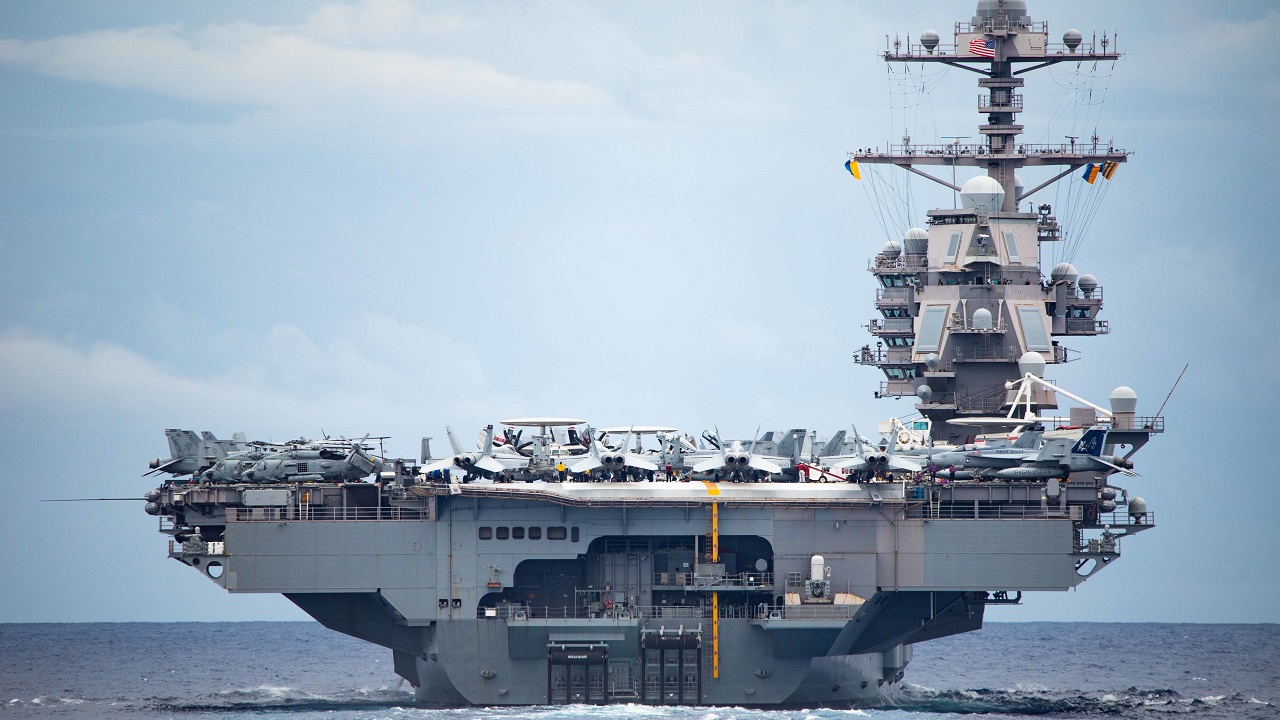Meet the Ford-Class: These aircraft carriers are super expensive and controversial. Are they worth the cost?
As I noted in my previous piece on this topic, a total of 10 ships are planned for the Ford supercarrier class.
In case any of our readers are wondering what makes an aircraft carrier a “supercarrier,” typically the label is applied to one that displaces over 65,000 tons. History’s first vessel to meet this criterion was the Imperial Japanese Navy’s ill-fated 69,000-tonner Shinano.
Logically, the lead ship in the class is named the USS Gerald R. Ford (CVN-78), the first new aircraft carrier designed in over 40 years.
The Gerald R. Ford and her sister ships will replace the venerable USS Enterprise (CVN-65), which began service in 1961, and the longstanding Nimitz-class CVNs, which were first commissioned in May 1975.
Specifications of the Ford class include a displacement of 100,000 tons, a length of 1,092 feet, a beam width of 256 feet, a max speed in excess of 30 knots (35 mph), four SAM launchers and three Phalanx CIWS gun systems for self-defense, a crew of 2,600 commissioned officers and enlisted sailors, and an aircraft capacity of more than 75.
Worth Her Weight in Gold
Many critics have questioned whether this new CVN class is a worthwhile expenditure.
Its program cost is $37.3 billion, and the unit cost is a tick short of $13 billion. The concerns when considering the increasing vulnerability of surface warships to missile attack, as starkly demonstrated by the Ukrainians’ sinking of the Russian Black Sea Fleet flagship Moskva, and the increasing capabilities of the hypersonic missiles being produced by China and Russia.
The counterpoint to those critics is this: The aircraft carrier still remains the primary power projection platform for the U.S. Navy, and that’s not going to change anytime soon. So if, hypothetically speaking, North Korea decides to reinvade South Korea and we in turn decide to respond militarily, aircraft carriers are going to be our primary response vehicle. Our carriers need every edge — every 21st century technological improvement they can get.
The AIRLANT website elaborates on those improvements: “Although it appears similar to a Nimitz-class aircraft carrier, there are many features that make Ford unique. First-in-class technology includes a new nuclear plant, the ability to generate nearly three times the amount of electrical power, innovative advanced arresting gear and the electromagnetic aircraft launch system (EMALS)…EMALS replaces the steam catapult system traditionally used to launch aircraft and will expand the aircraft launch envelope, paving the way for innovations in manned/unmanned aircraft as well as providing the opportunity for other technological advancements in the future.”
Moreover, the Fords are cost-effective — an all-too rare attribute in military procurements — as noted by the Newport News Shipbuilding info page: “The shipbuilders found value in every square inch of the ship, saving the Navy a projected $4 billion in ownership costs over the ship’s 50-year lifespan. The ship is equipped with two newly-designed reactors and has 250 percent more electrical capacity than previous carriers. The improvements will allow the ship to load weapons and launch aircraft faster than ever before.”
To reiterate what I said in my previous Ford-class write-up, “Sounds pretty damn worthwhile to me. Certainly less of a money pit than the F-35.”
Ford-Class: The Future
Thus far, only CVN-78 is in active service, having been commissioned on July 22, 2017. Next in line is USS John F. Kennedy (CVN-79), which was launched on Oct. 29, 2019 (and fittingly christened by JFK’s daughter Caroline), but is still undergoing her fitting out and therefore not yet in active service.
From there: USS Enterprise (CVN-80) had her keel laid on April 5, 2022, and is scheduled to be launched in November 2025, and commissioned sometime in 2028. USS Doris Miller (CVN-81), named for the Pearl Harbor hero and first African-American to be awarded the Navy Cross, is slated to be laid down in January 2026, launched in October 2029, and commissioned sometime in 2032.
MORE: Merkova: Israel Has A Super Tank
MORE: F-35I: Israel Has a Stealth Fighter America Dreams Of
Christian D. Orr is a former Air Force Security Forces officer, Federal law enforcement officer, and private military contractor (with assignments worked in Iraq, the United Arab Emirates, Kosovo, Japan, Germany, and the Pentagon). Chris holds a B.A. in International Relations from the University of Southern California (USC) and an M.A. in Intelligence Studies (concentration in Terrorism Studies) from American Military University (AMU). He has also been published in The Daily Torch and The Journal of Intelligence and Cyber Security. Last but not least, he is a Companion of the Order of the Naval Order of the United States (NOUS). In his spare time, he enjoys shooting, dining out, cigars, Irish and British pubs, travel, USC Trojans college football, and Washington DC professional sports.

